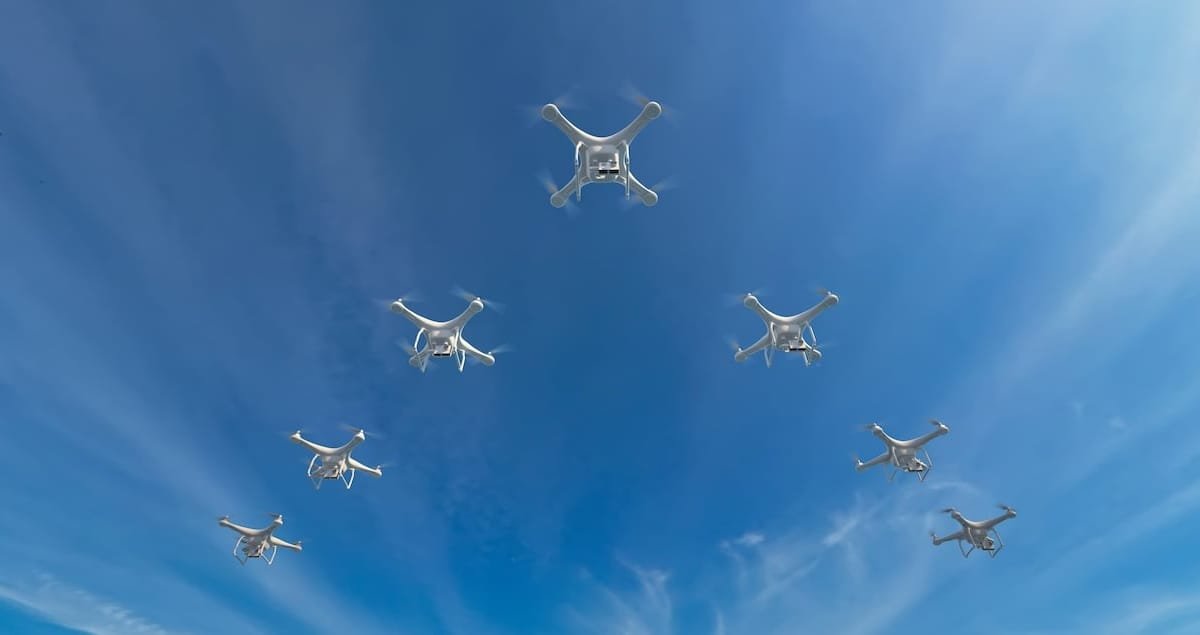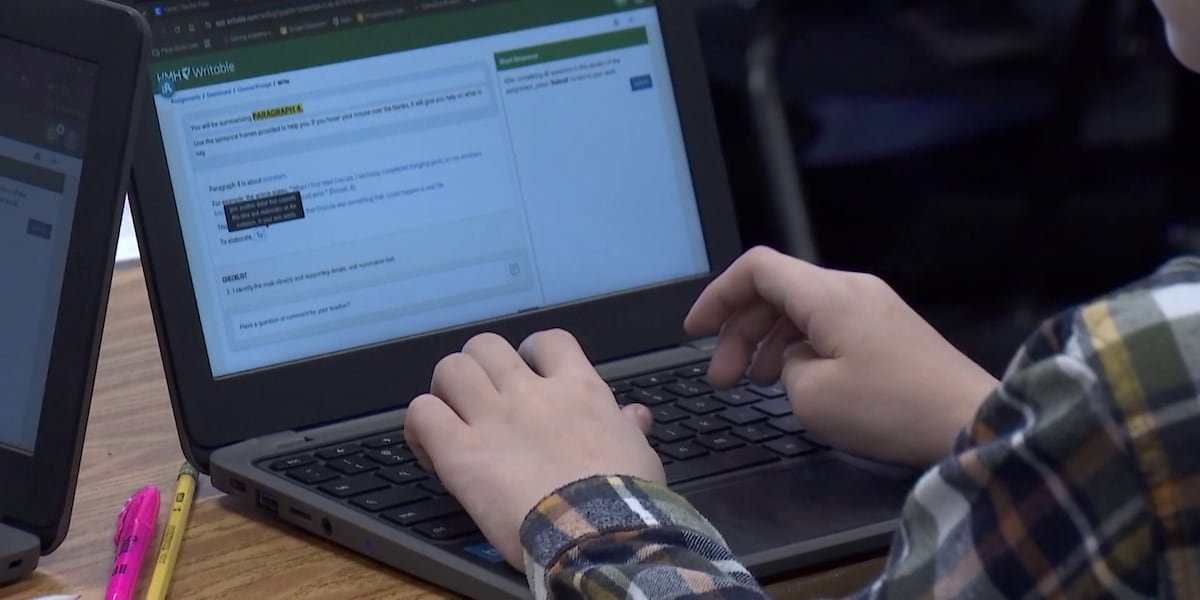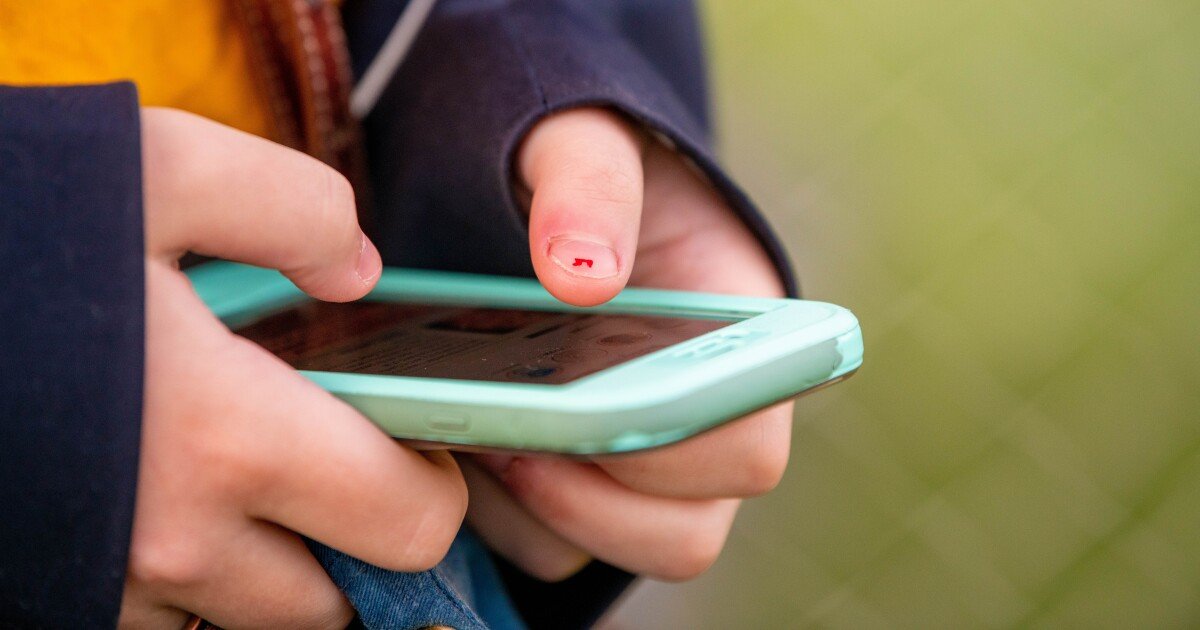AI Insights
What Is Swarm Intelligence? | Built In

Swarm intelligence is the collective behavior of multiple individuals — like drones, bits of code or even animals — that work together as one coordinated group without a central leader. Each unit, or “agent,” follows basic rules, gathering information of its surroundings and sharing these responses to nearby members of the swarm. These constant local interactions create a feedback loop of data that helps the group make decisions and solve complex problems no single agent could handle alone.
Swarm Intelligence Definition
Swarm intelligence is when many units collaborate without a leader, continuously communicating and following evolving rules based on shared local information. This dynamic interaction allows the group to adapt in real time and tackle complex problems together more effectively than any individual could alone.
The concept is inspired by nature: ants building tunnels, birds flying in formation, bees working together in hives. First coined by Gerado Beni and Jing Wang in 1989 while studying cellular robotic systems, swarm intelligence has become a growing area of research in robotics, logistics and data analysis as an extension of artificial intelligence.
These hive-minded systems are highly adaptable and resilient. If one agent fails, the other keeps going, making them useful in unpredictable or large-scale operations. While challenges like communication and coordination remain, swarm intelligence shows how decentralized systems can tap into the power of many.
What Is Swarm Intelligence?
Swarm intelligence is a form of collective problem-solving where many simple agents — like robots, drones or software programs — work together without a central leader. Each agent follows basic rules and communicates locally with nearby peers, creating a constant flow of information and feedback that allows the group to adapt and make decisions in real time. Inspired by natural systems like ant colonies and bird flocks, swarm intelligence enables groups to tackle complex tasks more efficiently and with more resilience than any single agent could do alone.
How Does Swarm Intelligence Work?
Swarm intelligence works through the decentralized coordination of multiple agents that follow simple, predefined rules. It begins with each agent acting independently, often making random guesses based on whatever information they have in front of them. The agents then gauge the success of their actions in real time using a “fitness score,” which is a numerical measure of how well it’s performing on a given task.
Agents continuously share this performance data with other nearby agents, forming a sort of local communication network. Using this shared feedback, each agent adjusts its behavior slightly, learning both from its own experience and the success of its neighbors. Over time, this constant loop of exploring, scoring, sharing and adjusting causes the entire swarm to gradually align toward better and better solutions.
Over time, this constant loop of exploring, scoring, sharing and adjusting causes the entire swarm to gradually align toward better and better solutions. The process doesn’t require a central leader — rather, the intelligence emerges organically from collective behavior and small, localized interactions.
Examples of Swarm Intelligence
Swarm Robotics
Swarm robotics involves groups of simple, autonomous robots working together without centralized control. These organized machines — in the form of airborne drones or ground robots — use an array of sensors, distributed algorithms and mesh networking protocols to coordinate in real time as they move and solve complex tasks as a unit. Some of the most impressive proofs-of-concept to date include the U.S. Department of Defense’s Perdix drones, which demonstrated self-healing flight formations, and Zhejiang University’s forest-navigating swarm, primarily designed for use in search-and-rescue missions.
Computational Algorithms
Computational algorithms like Particle Swarm Optimization (PSO) and Ant Colony Optimization (ACO) mimic the collective behaviors of animals such as birds and ants to solve complex problems. PSO is commonly used in engineering design and neural network training, figuring out the most efficient way to move through high-dimensional search spaces where anything can happen. On the other hand, ACO also takes inspiration from how ants use pheromone trails to discover shortcuts, speeding up areas like computer network routing and vehicle scheduling.
Telecommunications
In telecommunications, swarm intelligence helps networks manage themselves by letting devices figure out the best paths for data on the fly, without needing a central controller. Ant-based algorithms that use ACO protocols (as discussed above) have been implemented into wireless mobile ad hoc networks, which are used in field operations like military missions and disaster response to enable decentralized, fault-tolerant communication paths that temporarily sync mobile devices.
Finance
Swarm intelligence is increasingly being explored in finance to sharpen forecasts and decision-making. Instead of relying on isolated inputs or simple averages, human swarms — closed-loop networks where participants interact, continuously adjusting their contributions based on collective dynamics — function as a single-thinking system to converge on shared predictions. In a 19-week study, swarming increased the accuracy of financial traders’ predictions from 57 percent to 77 percent, outperforming both individuals and majority-vote crowds in forecasting indices like SPX, GLD, GDX and Crude Oil.
Logistics
Route optimization, warehouse management and delivery scheduling all benefit from self-organizing algorithms. Equipped with swarm intelligence, delivery fleets and autonomous robots can reroute around traffic or redistribute workloads on the spot without relying on a control center. Following a few successful pilot runs, global logistics leader DHL deployed a 5,000 fleet of swarm-programmed LocusBots across more than 35 warehouses.
Smart Farming
When swarms are applied in farming, they can coordinate multiple autonomous agricultural machines to monitor fields, apply treatments, manage irrigation, collect data and even pollinate crops. In a simulated scenario, one 2023 study showed that increasing the number of drones from one to eight reduced the scanning time spent during field monitoring from 19 minutes to less than three minutes. These lightweight, efficient machines also show promise in reducing soil damage, conserving resources and cutting down on pesticide use.
Military
Drones are becoming modern warfare’s weapon of choice, and tapping into swarm intelligence is an inevitable next step. Today, swarms are being deployed in defense scenarios to carry out high-risk missions like surveillance, electronic warfare, target acquisition and even coordinated strikes without endangering pilots or ground troops. In June, Ukraine used a swarm of 117 small, semi-autonomous drones to identify enemy targets and destroy 34 percent of Russia’s strategic cruise missile-carrying bomber fleet. The U.S. military is developing its own swarm intelligence with programs like DARPA’s OFFSET, which trains tactical urban combat swarms, and the Air Force’s Perdix drones, a large-scale micro-drone swarm that’s capable of adaptive formation flying and self-healing behavior.
Wildlife Tracking
Swarm intelligence is helping scientists monitor wildlife like zebras, elephants and dolphins more effectively by using multiple drones to capture high-quality data from different angles. Rather than one single overhead drone, swarms combine vertical and horizontal views to track movement patterns, social behavior and identify individual animals without disturbing them. Researchers are now testing out centralized swarm control systems, like one developed for the WildDrone Project, to feed the swarm real-time data and develop best practices.
Benefits of Swarm Intelligence
Swarm intelligence turns groups of simple machines into powerful, coordinated teams. Here are some key benefits to this collective approach:
- Live Coordination: Drone swarms work together and adapt in real time, tackling complex missions in sync that no single drone could handle alone.
- Decentralized Resilience: Even if some drones get taken out, the swarm is able to carry on thanks to its distributed control and self-healing mechanisms.
- Risk Mitigation: Autonomous swarms take on dangerous jobs so soldiers and pilots don’t have to risk their lives on the job.
- Strength in Numbers: Sending out large numbers of low-cost drones en masse at once is one way to overwhelm an enemy’s defenses and regain the high ground.
- Enhanced Situational Awareness: A swarm’s integrated sensors provide a clear, up-to-the-minute picture of what’s happening on the ground and in the air across miles of operational areas.
Challenges of Swarm Intelligence
Still, swarm intelligence still comes with some significant challenges that researchers and developers are still working to overcome. These include:
- Unreliable Communication: Drones need to stay connected to work together, but signals can get jammed, interrupted or lost — which can throw the whole swarm off.
- Autonomous Decision-Making: Without a leader drone calling the shots, each drone has to adapt as the swarm travels through dynamic environments. This level of synchronicity requires sophisticated AI systems — all of which are still in development — to pull off.
- Cybersecurity Vulnerabilities: The larger the drone swarm, the higher the more susceptible it is to hacking or spoofing attacks due to its expanded attack surface and an increase in points of entry. Cyberattacks could compromise a swarm’s targeted mission, or turn them against friendly forces.
- Regulatory and Ethical Constraints: Deploying swarms raises tough questions about things like privacy, accountability when something goes wrong and the rules around letting machines make lethal decisions. All of which still need clear, standardized answers. Right now, the U.S. military’s guidelines require a human operator to approve any lethal action, keeping them “in the loop” to make sure accountability stays clear.
What is the difference between artificial intelligence and swarm intelligence?
Artificial intelligence is about teaching one machine to think and make decisions, while swarm intelligence is all about how a bunch of simple machines come together as a team to tackle tasks.
Is swarm intelligence being used?
Yes; swarm intelligence is actively being used in military drone operations. Beyond that, it’s applied in agriculture for crop monitoring, in disaster response for search-and-rescue missions and in environmental science for wildlife tracking.
AI Insights
AI use is expanding in Las Vegas Valley classrooms, officials say

LAS VEGAS (FOX5) — As the use of artificial intelligence grows globally, it is also expanding within Clark County School District classrooms, officials say.
In the last few years, the district has embedded several AI tools into its curriculum, officials said. FOX5 got an inside look at one example at Faiss Middle School near Fort Apache and Warm Springs roads in southwest Las Vegas.
“If you had an actual assistant in your classroom, how would you utilize that assistant?” asked Karen DelCasino, an eighth-grade teacher at the school. “AI is just kind of that assistant.”
DelCasino, who has taught at the school for 19 years, demonstrated the use of an AI program called Writable in her classroom. She said the AI program operates on students’ Chromebooks, allows them to submit assignments, and provides feedback to her in real time.
“It used to take hours to grade paragraphs, to grade essays,” DelCasino said. “It’s a lot more efficient than it used to be on pen and paper.”
DelCasino said she reviews the feedback before sharing it with students.
“I might make revisions on how it’s scored because, as a teacher, I know exactly what I’m looking for; AI only knows so much,” she said.
Rachel Solem, director of the Clark County School District’s Literacy and Language Development Department, said Writable is one of several programs available to schools in the district.
“AI is not going away, right?” Solem said. “We want to make sure our students know how to use that, but use it responsibly.”
Solem said the school district has developed a “safe list” of programs allowed in classrooms, meaning they have an agreement with the district to ensure student data is protected.
Student safety is also top of mind for the Nevada Department of Education, according to Emily Bleyle, the department’s education programs professional for computer science.
“Always a huge concern is security, privacy of student data,” Bleyle said. “It’s a closed-loop system, where it’s not being used to train the models.”
She said an AI task force developed an ethics statement to guide AI use in schools statewide, adding that they hope AI can help teachers with administrative work so they can spend more time connecting with students.
Copyright 2025 KVVU. All rights reserved.
AI Insights
Children are asking AI for advice on sex and mental health, new report finds

With AI regulation still up in the air, a new report reveals concerning trends in how children interact with artificial intelligence — and they’re not just using it for homework help.
The study shows some children and teens are turning to AI chatbots for conversations about sensitive topics like sex. The report also finds they spend more time chatting online with AI than texting their friends.
Experts warn that some kids may be confusing chatbots with actual human relationships.
Children having longer conversations with AI than friends
As the use of artificial intelligence continues to spread, a growing number of children are turning to it for companionship.
Those are the findings in the new report from the company Aura, which provides digital protection services. They found some children are having conversations with AI chatbots that are 10 times longer than the texts they send their friends.
Among Aura’s findings, the company found messages to GenAI companion apps averaged 163 words per message. The typical iMessage is just 12 words.
“We have kids eight, 10 years old that we’re seeing in our data that are using these platforms,” said Aura’s chief medical officer Dr. Scott Kollins.
In analyzing how kids are using the tech, Aura found AI interactions ranging from homework and mental health themes to shared personal information and even sexual and romantic roleplaying.
“The concern that raises for me as a psychologist, but also as a parent, is that it’s clearly serving some purpose for the kids from a social interaction perspective,” Kollins said. “But if that becomes a substitute for learning how to interact and engage in real life, that presents some big unknowns and potential problems for kids’ development.”
Experts warn of developmental risks
Experts say those potential problems can arise because children lack the emotional maturity to understand interactions with AI.
Link to Dr. Joanna: https://www.healthychildren.org/English/family-life/Media/Pages/are-ai-chatbots-safe-for-kids.aspx
“The thing about children is they have more magical thinking than adults, so they can really attach to an AI chatbot and think that it’s human,” Dr. Joanna Parga-Belinkie said.
Parga-Belinkie is a pediatrician and neonatologist. She’s not involved in Aura’s research but says chatbots can be risky for young users.
“AI will feed a user information it thinks that user wants to hear,” she explained, “and there are just not a lot of safeguards in place to stop AI from telling children, false, harmful, over-sexualized, or even violent things.”
Parents urged to set boundaries
Experts say it’s important for parents to take steps to talk to their children about safe and appropriate uses for AI.
Kollins points out that while many people are familiar with ChatGPT and a few other popular AI chatbots, in reality there are hundreds of AI tools out there. He says parents need to make sure they know which apps their child is downloading so they can set appropriate boundaries.
RELATED STORY | Anthropic will pay out $1.5B to settle allegations of book piracy, used to train its AI
Uncertainty over AI policy
There are organizations like the nonprofit Common Sense Media pushing for a ban of Meta’s AI chatbot for kids under the age of 18.
This month, First Lady Melania Trump called on private and public sectors to prepare children for the growth of AI.
For now, uncertainty remains for AI policies geared toward children. Experts advise parents to monitor their children’s phones, ask questions, and talk about the dangers of sharing personal information.
This story was reported on-air by a journalist and has been converted to this platform with the assistance of AI. Our editorial team verifies all reporting on all platforms for fairness and accuracy.
AI Insights
Sevierville uses new artificial intelligence system to fix potholes, rate roadways – WBIR
-

 Business2 weeks ago
Business2 weeks agoThe Guardian view on Trump and the Fed: independence is no substitute for accountability | Editorial
-
Tools & Platforms4 weeks ago
Building Trust in Military AI Starts with Opening the Black Box – War on the Rocks
-

 Ethics & Policy1 month ago
Ethics & Policy1 month agoSDAIA Supports Saudi Arabia’s Leadership in Shaping Global AI Ethics, Policy, and Research – وكالة الأنباء السعودية
-

 Events & Conferences4 months ago
Events & Conferences4 months agoJourney to 1000 models: Scaling Instagram’s recommendation system
-

 Jobs & Careers2 months ago
Jobs & Careers2 months agoMumbai-based Perplexity Alternative Has 60k+ Users Without Funding
-

 Education2 months ago
Education2 months agoVEX Robotics launches AI-powered classroom robotics system
-

 Podcasts & Talks2 months ago
Podcasts & Talks2 months agoHappy 4th of July! 🎆 Made with Veo 3 in Gemini
-

 Education2 months ago
Education2 months agoMacron says UK and France have duty to tackle illegal migration ‘with humanity, solidarity and firmness’ – UK politics live | Politics
-

 Funding & Business2 months ago
Funding & Business2 months agoKayak and Expedia race to build AI travel agents that turn social posts into itineraries
-

 Podcasts & Talks2 months ago
Podcasts & Talks2 months agoOpenAI 🤝 @teamganassi


